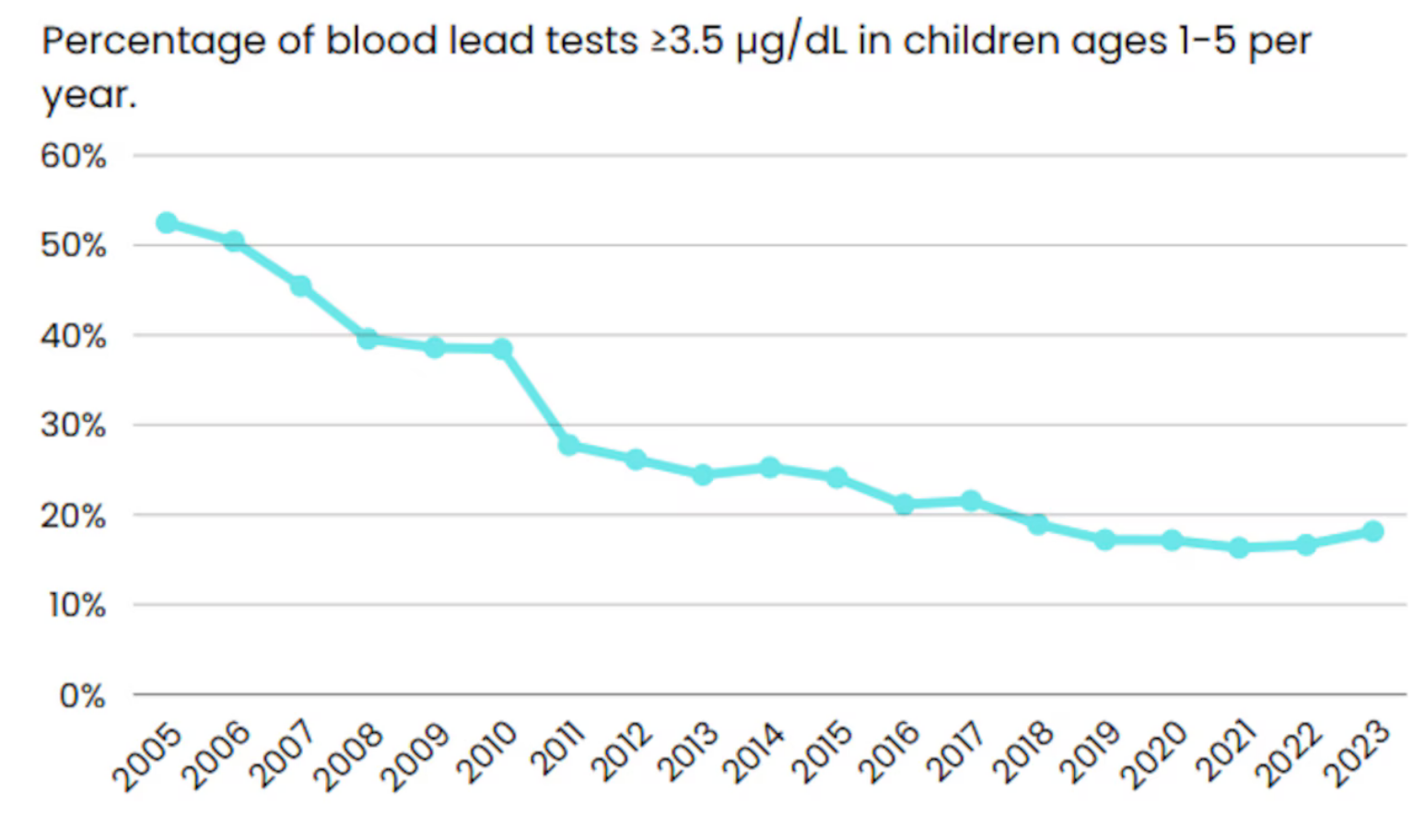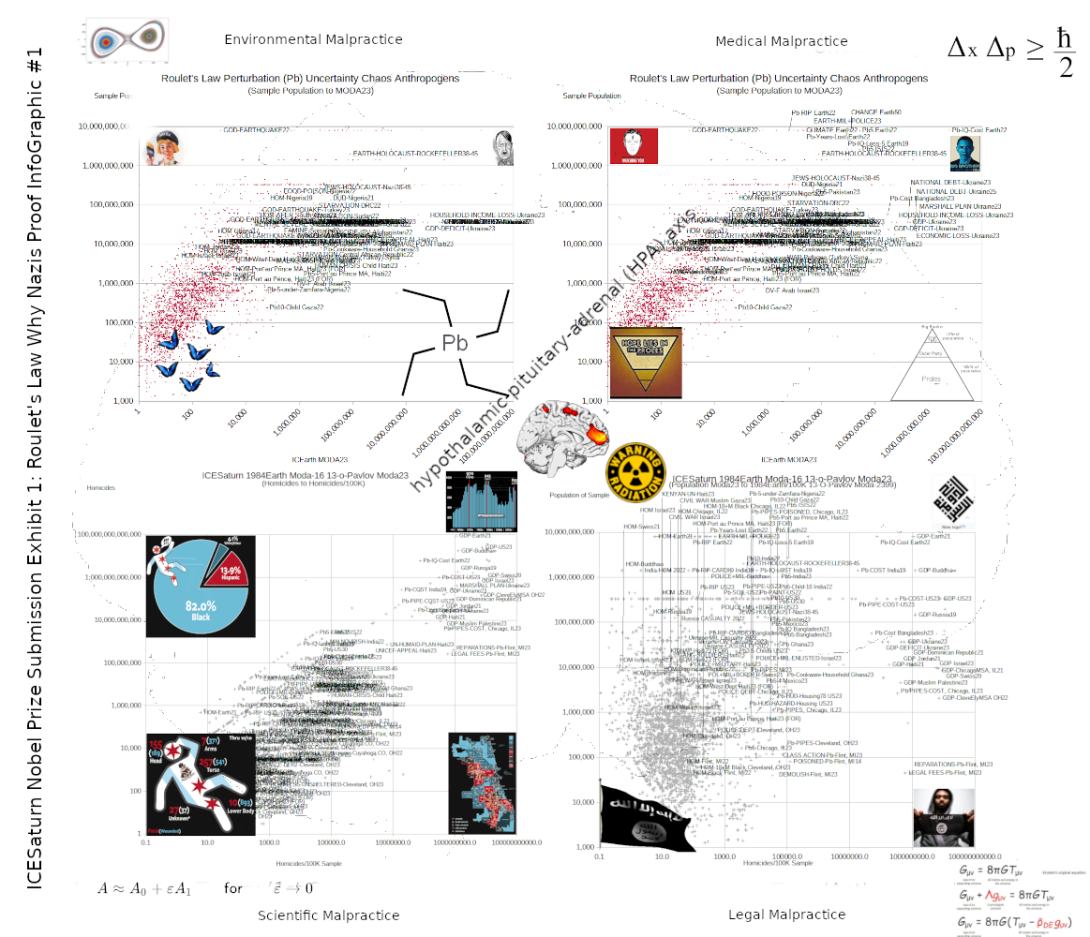



- Published: Nov. 03, 2024, 5:59 a.m.
Nearly one-in-five Cleveland children continue to have elevated levels of lead in their blood despite the city's lead-safe certification efforts launched five years ago. Time for a radically new approach, the editorial board of The Plain Dealer and cleveland.com writes today.City of Cleveland
Five years ago, Cleveland set out to make history with a law aimed at safeguarding children from the dangers of lead paint. Yet, five years later, we’re staring at failure. Instead of celebrating a milestone in public health, we’re stuck in a crisis where lead poisoning remains an ever-present threat, especially to Cleveland’s youngest and most vulnerable residents.
The numbers are shocking. Childhood lead poisoning rates in Cleveland are two to three times higher than those seen in Flint, Michigan, during the height of its infamous lead crisis, Cleveland Public Health Director Dr. David Margolius recently told City Council. From 2021 to 2023, over 4,200 children under the age of five were poisoned.
And what progress has been made? None. We have nearly $100 million allocated for lead abatement, yet only $6.2 million has been spent. Meanwhile, lead poisoning rates have not decreased; in fact, they’ve climbed. Five years gone. Thousands of kids harmed. And a $93 million pool sitting largely unspent. It’s unconscionable.
It’s clear that Cleveland’s lead-safe certification approach, which relies on a basic “clearance exam,” isn’t working. Under this flawed system, landlords can pass inspections by merely painting over old lead layers a Band-Aid solution that leaves children at risk. Paint deteriorates and chips, and as soon as it does, the toxic dust is back, ready to infiltrate the lungs and bloodstreams of the kids who play, sleep, and live in these homes. Eleven children were poisoned last year in homes that supposedly passed inspection. This is what happens when “lead-safe” certification is a two-year checkmark instead of a permanent solution.
Mayor Justin Bibb and his team have recognized the need for change, proposing a switch to a “risk assessment” approach that digs deeper, identifying the long-term structural issues that expose children to lead. This higher standard is certainly an improvement, but the city should go further. It’s time to abandon interim fixes and commit to fully removing lead from Cleveland homes. It’s not enough to just “manage” the lead; we need a system that permanently eliminates it.
Permanent abatement is costly and complex, but so are the long-term consequences of lead poisoning. Every house we leave untouched is a home where future generations may grow up with irreversible brain damage, attention deficits, behavioral issues and a higher likelihood of ending up entangled with the criminal justice system. Four years ago, University Hospitals’ Antifragility Initiative correlated more than 40% of pediatric trauma patients to “lead poisoning at critical points in their development,” cleveland.com reported. We cannot afford to continue half-measures when we’re sacrificing the health and potential of Cleveland’s children.
Opponents will argue that the cost and complexity of universal lead abatement are prohibitive. But what’s more costly — paying now for a future where children can grow up free from lead poisoning or continuing to manage the fallout of these toxic environments? The funds are there to begin the process, but they aren’t enough to finish the job. Cleveland will need additional resources to reach the finish line, and we need contractors trained in lead removal, supported by a system that prioritizes quick action on high-risk homes. With targeted abatement, we can begin in East Side neighborhoods and other areas with the highest rates of poisoning.
It’s also time to hold landlords accountable. Cleveland’s lead-safe law mandates certification every two years, but compliance remains abysmal, with an estimated two-thirds of landlords ignoring the requirements. For years, the city has been lenient, prioritizing incentives over enforcement. But incentives alone aren’t enough to bring landlords into compliance. If landlords fail to take responsibility, the city should enforce civil penalties and make use of the new tools afforded by Cleveland’s Residents First reforms to pursue those who refuse to comply. The stakes are too high, and the law’s current leniency only reinforces the notion that Cleveland doesn’t take this crisis seriously.
It’s not too late to change course. Cleveland has the resources to start solving this problem, and what we need now is political will, urgency, and a commitment to the health of our children.
Five years is long enough. Five years of additional lead poisoning is far too much. It’s time to stop talking and start spending on solutions that are wise, decisive, and permanent. Every lead-free home we create is a promise to future generations that they won’t be poisoned in their own bedrooms. We have a strong start. We have the mandate. Let’s make Cleveland lead-free, once and for all.
About our editorials: Editorials express the view of the editorial board of cleveland.com and The Plain Dealer -- the senior leadership and editorial-writing staff. As is traditional, editorials are unsigned and intended to be seen as the voice of the news organization.


Comments1
Lead demands action. No more half-measures, no more excuses
Lead demands action. No more half-measures, no more excuses: Black Hitler